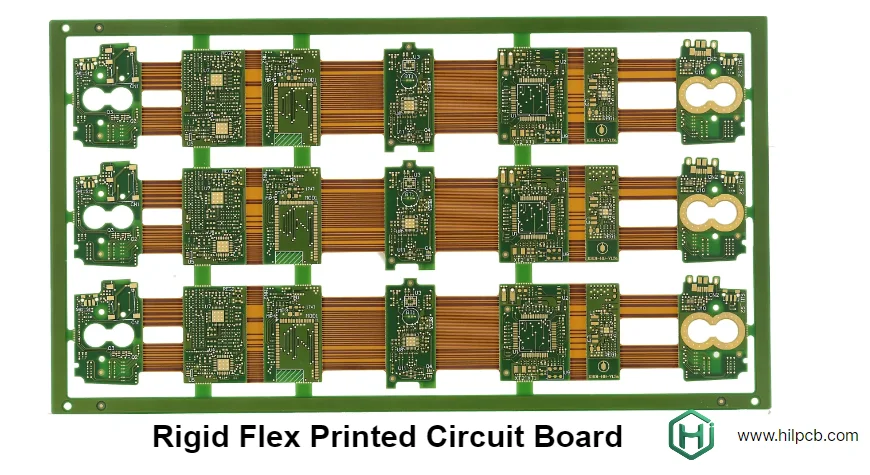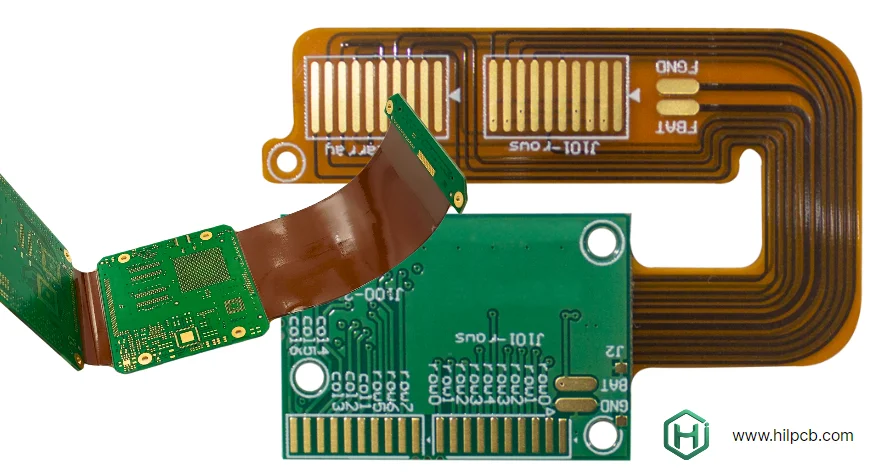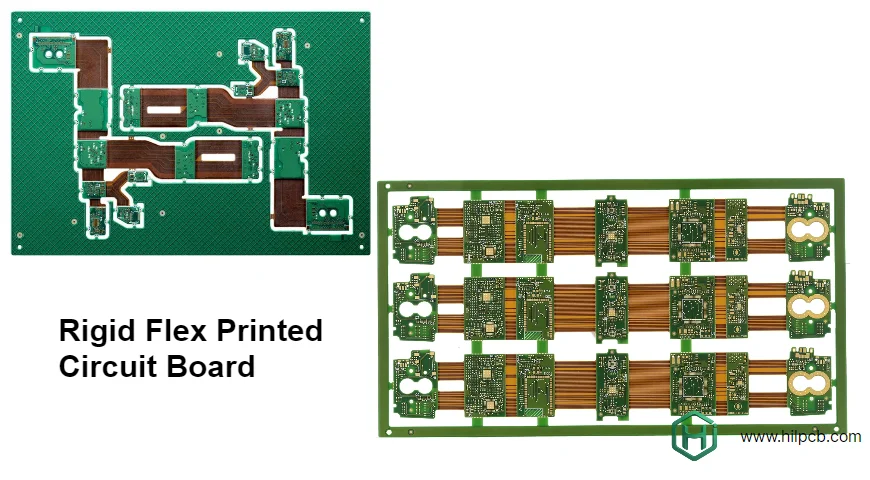Rigid flex printed circuit boards solve design challenges that no other interconnect technology can match. When Apple revolutionized smartwatch design with the original Apple Watch, the internal architecture relied heavily on rigid flex to pack maximum functionality into minimal volume while surviving daily wrist movement and impact.
That same technology now powers medical implants, aerospace systems, and automotive sensors—anywhere reliability under movement matters more than simple cost minimization. At HILPCB, we manufacture rigid flex printed circuit boards for applications where failure isn't an option, combining multilayer PCB expertise with specialized flexible circuit capabilities.
Medical Device Applications
Medical applications demand the highest reliability standards for rigid flex printed circuit boards. When devices operate inside the human body or support critical patient monitoring, every interconnection point becomes a potential failure mode that could harm patients.
A cardiac pacemaker manufacturer switched to rigid flex after experiencing field failures with their traditional flex cable assembly. The problem wasn't the cables themselves—it was the connectors. Each connector represented a potential failure point, and connector reliability decreased with miniaturization. By eliminating six connectors through rigid flex integration, they reduced potential failure points by 60% while shrinking device volume 40%.
Wearable Medical Devices Continuous glucose monitors and cardiac monitors attach directly to patient skin for days or weeks. Traditional PCB assemblies create bulky, uncomfortable packages. Rigid flex printed circuit boards enable thin, flexible form factors that conform to body contours while maintaining electronic reliability.
Our high-Tg PCB materials in rigid sections handle sterilization temperatures while flexible polyimide sections survive repeated patient movement. The result: comfortable devices patients actually wear consistently, generating the continuous data that improves medical outcomes.
Surgical Instruments Minimally invasive surgical tools require electronics that flex during use while maintaining signal integrity for imaging sensors and control systems. A surgical robotics company came to us needing rigid flex printed circuit boards surviving 100,000 flex cycles while transmitting high-speed video from tip-mounted cameras.
The challenge combined mechanical reliability with electrical performance—4K video at 60fps demands tight impedance control even through flexible sections. We designed Rogers PCB materials in signal layers for consistent dielectric properties through flex zones, maintaining signal integrity through every surgical procedure.

Aerospace and Defense Systems
Aerospace applications push rigid flex printed circuit board technology to extremes: temperature cycling from -55°C to +125°C, altitude changes causing pressure variations, constant vibration and shock, radiation exposure in high-altitude and space applications. Traditional interconnects fail under these conditions—rigid flex thrives.
Satellite Communications A satellite manufacturer faced recurring failures in their deployable antenna systems. Traditional flex cables connecting antenna elements to main electronics experienced microcracking from thermal cycling during day-night transitions in space. Each thermal cycle caused copper traces to expand and contract at different rates than the substrate, creating cumulative damage.
Switching to rigid flex printed circuit boards with properly designed transition zones eliminated the problem. The integrated structure removed connector points and provided controlled stress distribution during thermal cycles. After qualifying the design through 1,000 thermal cycles (equivalent to 3 years in orbit), the assembly showed zero degradation.
Unmanned Aerial Vehicles Military UAVs pack sophisticated electronics including radar, communications, navigation, and weapons systems into compact airframes. Weight matters—every gram of interconnect weight reduces flight endurance or payload capacity. Rigid flex printed circuit boards save 30-45% weight compared to traditional rigid PCB assemblies with cables and connectors.
Beyond weight savings, the integrated structure provides superior vibration resistance. A defense contractor experienced accelerometer calibration drift in their navigation system due to micro-movements at cable connections. Converting to rigid flex eliminated the problem by removing mechanical slack in the system.
Consumer Electronics Innovation
Consumer products showcase rigid flex printed circuit board advantages in cost-sensitive, high-volume applications where reliability meets aggressive pricing targets. Success requires balancing performance against manufacturing cost at volumes of millions of units annually.
Smartphones and Tablets Modern smartphones contain 8-12 rigid flex assemblies connecting main board to cameras, displays, buttons, antennas, and charging circuits. Each assembly replaces what once required multiple rigid PCBs connected by flex cables and connectors—reducing assembly complexity, improving reliability, and enabling thinner industrial designs.
A smartphone manufacturer calculated that rigid flex added $3.50 to bill-of-materials compared to traditional approaches. However, eliminating connectors saved $2.80, reduced assembly time saved $1.40, and improved field reliability reduced warranty costs $0.60 per unit. Net benefit: $1.30 per unit at volumes of 5 million units annually = $6.5 million annual savings.
Wearable Devices Fitness trackers, smartwatches, and wireless earbuds require electronic packaging that moves with the user while resisting sweat, impact, and daily wear. Standard PCB assemblies with cables fail quickly in these applications—rigid flex printed circuit boards enable the product category.
Our flex PCB construction for consumer wearables balances cost and reliability: adhesive-based polyimide for non-dynamic areas, adhesiveless construction only where needed for active flexing, optimized copper thickness, and strategic stiffener placement. This approach provides reliability needed for 2-year product life while hitting consumer product pricing targets.

Automotive Electronics Integration
Automotive applications demand rigid flex printed circuit boards surviving extreme temperature ranges, constant vibration, humidity exposure, chemical exposure from fluids, and operation over 15-20 year vehicle life. Traditional interconnects can't meet these requirements cost-effectively.
Advanced Driver Assistance Systems Modern vehicles contain 40-100 separate electronic control units. Connecting displays, cameras, radar sensors, and processing units requires interconnects surviving harsh automotive environments while maintaining signal integrity for high-speed data.
A Tier 1 automotive supplier developed surround-view parking systems using rigid flex printed circuit boards connecting four cameras to central processing unit. The design eliminated 16 connectors from their previous cable-based approach. Field testing showed zero connection failures after 2,000 hours of temperature cycling, salt spray exposure, and vibration—versus 8% connector failure rate in their previous design.
Electric Vehicle Power Systems Electric vehicles present unique challenges: high-voltage power distribution, electromagnetic interference from power electronics, temperature extremes from battery systems, and space constraints in optimized vehicle designs. Rigid flex printed circuit boards handle these requirements through material selection and design optimization.
We use high-thermal PCB materials where heat dissipation matters, incorporate proper clearances for high-voltage isolation, and provide electromagnetic shielding where needed. The result: reliable power electronics that last the vehicle lifetime.
Industrial and IoT Applications
Industrial environments demand reliability under continuous operation often in harsh conditions. IoT sensors and controllers must operate autonomously for years without maintenance—traditional interconnects fail this requirement.
Industrial Robotics Manufacturing robots require electronics surviving millions of motion cycles. Cable assemblies and connectors wear out, causing increasing maintenance costs and production downtime. Rigid flex printed circuit boards in robot arms and end effectors eliminate these failure modes.
A automotive assembly line robot experienced cable failures every 8-12 months, requiring $15,000 maintenance intervention each time. Converting to rigid flex eliminated failures—the assembly lasted the entire 7-year robot service life. Maintenance savings exceeded $100,000 per robot over its lifetime.
Smart Building Systems HVAC controls, lighting systems, and security sensors benefit from rigid flex printed circuit boards packaged in compact, sealed enclosures. The integrated construction enables smaller packages that fit into limited installation spaces while improving reliability through reduced interconnection points.
Our turnkey assembly service provides complete IoT device manufacturing from PCB through final enclosure, simplifying your supply chain and accelerating time-to-market.
Selecting the Right Rigid Flex Solution
Application Assessment Successful rigid flex implementation starts with understanding your specific requirements: expected flex cycles, environmental conditions, size constraints, volume requirements, and cost targets. Preview your design requirements using our Gerber viewer tool, then submit complete specifications through our quote request page for detailed analysis.
Design Support We provide comprehensive engineering support to optimize your rigid flex printed circuit board design for manufacturability, reliability, and cost. Most applications benefit from 20-35% cost reduction through proper optimization without compromising functionality.
Frequently Asked Questions - Rigid Flex Printed Circuit Board Applications
Q1: Which applications benefit most from rigid flex printed circuit boards?
Applications requiring movement (wearables, robotics), 3D packaging (smartphones, medical devices), high reliability (aerospace, medical), elimination of connectors (any application), weight reduction (UAVs, satellites), or harsh environments (automotive, industrial). If your design uses multiple rigid PCBs connected by flex cables, rigid flex likely provides advantages.
Q2: How do automotive qualification requirements affect rigid flex PCB design?
Automotive applications require IATF 16949 certification, AEC-Q200 component qualification, thermal cycling -40°C to +125°C, humidity resistance, vibration testing, and salt spray exposure testing. We maintain all required certifications and provide testing documentation for automotive qualification programs.
Q3: What materials work for medical device rigid flex applications?
Medical devices often require ISO 13485 manufacturing, biocompatible materials for patient contact, sterilization compatibility (autoclave, EtO, gamma), and complete material traceability. We work with medical-grade polyimide films, use biocompatible coverlay adhesives where needed, and provide full material certifications and traceability documentation.

